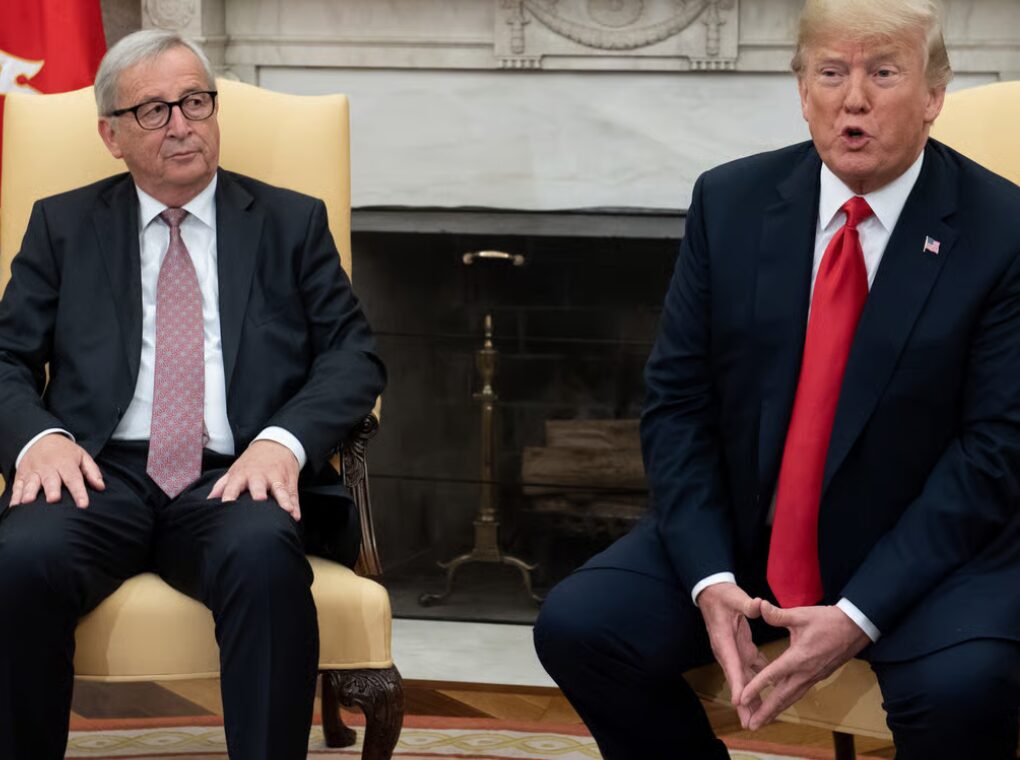Eastern Europe is once again on the edge of escalation. U.S. President Donald Trump has reportedly authorized Ukraine to conduct long-range strikes inside Russian territory, a move that marks a sharp departure from the restrictive policies of the Biden administration. The revelation came through Trump’s special envoy, retired Lt. Gen. Keith Kellogg, during a Fox News interview.
Simultaneously, Ukrainian President Volodymyr Zelensky announced a $90 billion arms deal with Washington—a package that includes advanced long-range missile systems, drone production facilities, and expanded security guarantees. Together, these developments have triggered alarm in Moscow, which has repeatedly warned that the transfer of U.S. cruise missiles such as the Tomahawk would be treated as a direct act of war.
Trump’s Green Light
The turning point came when Kellogg was asked whether Trump had granted Kyiv permission to strike deep into Russia. His reply was unequivocal: “The answer is yes. Use the ability to hit deep—there are no such things as sanctuaries.”
Under the Biden administration, Ukrainian strikes with U.S.-supplied weapons were restricted to within about 100 kilometers of Russian territory, a precaution meant to avoid provoking the Kremlin. Trump’s approach removes those limits, potentially allowing Ukraine to target airbases, command centers, and logistical hubs far from the front lines.
Supporters in Washington, particularly Republican lawmakers, welcomed the decision as a necessary step to pressure Vladimir Putin. Critics, however, warn that it risks crossing a dangerous red line—especially if Tomahawk cruise missiles are ultimately included.
The Tomahawk Question
The BGM-109 Tomahawk represents the most sensitive element of this debate. With a range exceeding 1,000 miles, it could place virtually any target in Russia within Ukraine’s reach.
Vice President J.D. Vance has confirmed that the administration is “considering” Kyiv’s request. Some proposals even suggest routing the missiles through NATO allies to obscure direct U.S. involvement.
But Moscow has already drawn firm boundaries. Earlier this year, Putin warned Germany that supplying Ukraine with Taurus cruise missiles would make Berlin a direct participant in the war. Analysts argue that if Germany’s 500-kilometer-range Taurus prompted threats, U.S.-made Tomahawks would almost certainly provoke an even stronger reaction.
Russian officials have further suggested that U.S. personnel might need to operate such systems in Ukraine—a scenario Moscow would interpret as proof of direct U.S. participation in the conflict, and therefore open war with NATO.
Zelensky’s $90 Billion “Mega-Deal”
Adding to the tension, Zelensky has unveiled a $90 billion procurement package with the United States. According to Politico, Ukrainian delegations will travel to Washington in the coming weeks to finalize the details.
Key elements include:
Long-range missile systems, possibly including upgraded ATACMS or Tomahawks.
Joint drone production facilities to mass-produce reconnaissance and strike drones.
Security guarantees tied to NATO commitments and European financial backing.
Zelensky framed the deal as a step toward self-sufficiency, reducing reliance on direct aid. Yet critics contend it risks locking Ukraine—and the U.S.—into an open-ended conflict.
Questions also linger over the feasibility. Tomahawks take years to produce, and U.S. stockpiles are already strained. With American public opinion showing fatigue over continued aid, the sustainability of such massive transfers is far from certain.
Moscow’s Response
Russia’s reaction, while still measured, carries ominous undertones. Although Putin has not yet spoken directly on Tomahawk transfers, previous warnings over German Taurus missiles provide a clear indicator. Russian state media has already seized on Kellogg’s remarks, portraying them as evidence that Washington has abandoned all restraint.
Possible retaliatory measures could include:
Deploying Russian forces deeper into Ukraine to counter Western systems.
Expanding missile strikes against NATO-linked infrastructure.
Or targeting U.S. assets abroad.
Each of these options risks widening the conflict into a direct NATO–Russia confrontation, the very outcome Western leaders have sought to avoid since 2022.
The Bigger Picture
For Ukraine, the calculus is straightforward: long-range strike capability would give Kyiv the means to disrupt Russia’s logistics, slow missile launches, and regain initiative on the battlefield.
For the United States, the picture is far more complex. A Tomahawk strike on Russian soil, carried out with U.S. authorization, could be framed in Moscow as Washington entering the war directly. Any Russian retaliation against U.S. or NATO targets could quickly spiral into a global conflict under NATO’s Article 5 obligations.
Trump, who campaigned on ending the war “in 24 hours,” now appears to be pursuing a high-risk strategy: combining military escalation with the possibility of diplomatic negotiations, betting that Putin will be pressured into compromise.
A Conflict at the Crossroads
As Zelensky’s delegation heads to Washington, the stakes could not be higher. Trump’s authorization of long-range strikes, coupled with the unprecedented arms package, represents a fundamental rewriting of the war’s rules.
Will these moves succeed in forcing Putin to the negotiating table? Or are the U.S. and Russia sliding toward the direct collision long feared by analysts?
For now, the world waits anxiously. And history suggests that when great powers gamble with escalation, the consequences rarely remain confined to the battlefield.
